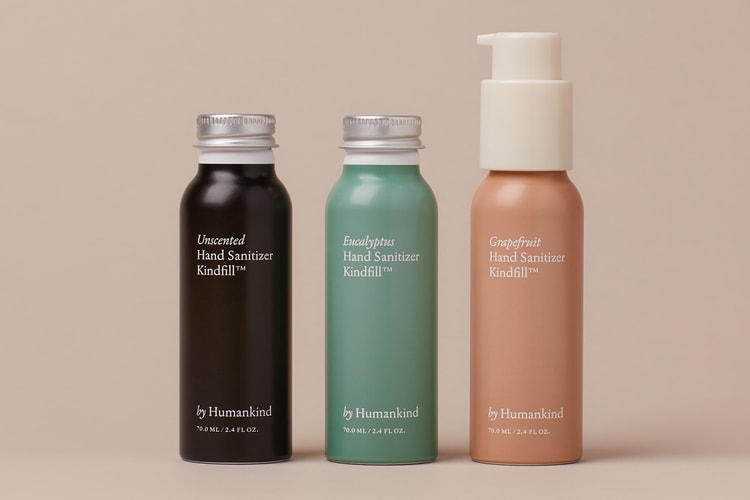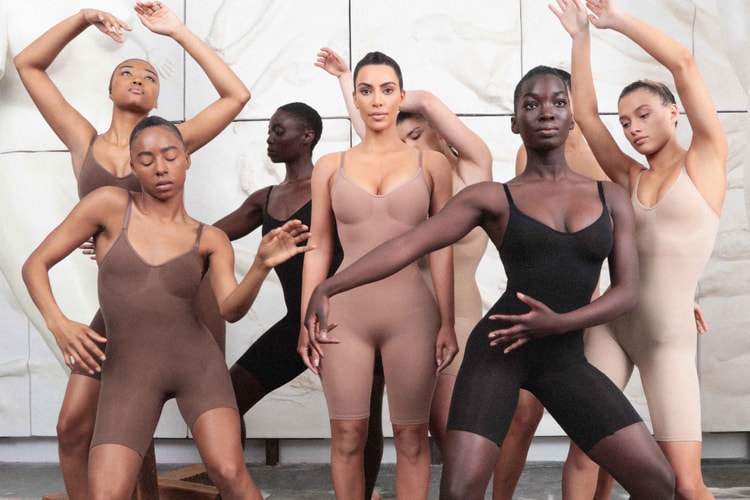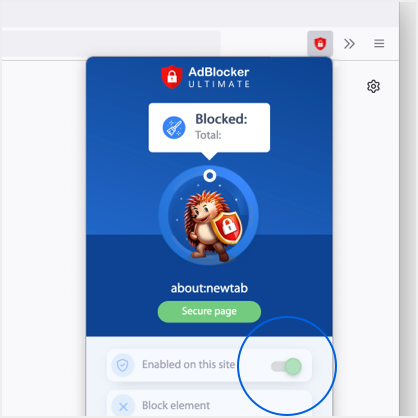Erotic Mindfulness: Can You Achieve an Orgasm Through Meditation?
A sex therapist breaks down the concept of the uncommon practice.
Sex can be a very taboo topic for a select group of people who come from different cultures or backgrounds, and is something that many choose to not speak about. Some women, in particular, can be quite reserved when it comes to opening up about their sexual desires in the bedroom, while others are more transparent about their preferences – either alone or with company.
According to certified Somatic Psychologist and Sex Therapist Dr. Holly Richmond, it is vital for women to experience an orgasm due to it being beneficial for one’s mental and physical health. However, once performance starts to become goal-oriented, some tend to lose focus and disconnect from themselves and/or from their partner. As a result, the practice of erotic mindfulness was born, allowing singles and couples to further explore their bodies through the thoughtful exercise of awareness and presence without judgment.
To find out more about the concept behind mindful sex, how you can achieve an orgasm through meditation and why some women have a hard time finding their g-spot, read our interview with Dr. Richmond below.
If you’d like to further expand your knowledge on the topic, be sure to sign up for her last mindful sex sessions on September 22 via Dame Workshops.
How would you define erotic mindfulness? Is orgasmic meditation (OM) similar to traditional meditation?
Erotic mindfulness is an erotic practice in patience and awareness without judgment. What makes mindfulness so powerful is the cultivation of awareness in the present moment from the position of a non-judgmental observer. We are so often in our heads, fueling the critical observer side of our brains, thinking about everything we do, second-guessing what we say and criticizing what we look, sound, smell or taste like. To me, that is the exact opposite of erotic mindfulness.
I feel orgasmic meditation is a bit goal-oriented. The OM community says orgasm is not the goal, but “orgasmic” is in the name, so I believe that’s what people expect. I think any time we have goal-oriented sex, we are stepping away from mindful sex. Having an orgasm is important and I want everyone to experience that because they’re good for us and feel great, but when performance becomes the goal, I see couples disconnect from themselves and from each other.
What are the required steps to successfully achieve an orgasm through meditation?
The first step is to be grounded and present in your environment, making sure you feel safe and not anxious. I usually do a grounding exercise using the five senses to get my clients into their bodies.
The next step is to be open and curious about what you might discover. Our brains are our biggest sex organ and for women, in particular, hands-free orgasms are achievable and even readily accessible for some. We don’t have to do anything but use our erotic imagination and let that lead us toward pleasure.
The final step is to get out of your head and into your body, which ties back to this idea of the non-judgemental observer. My clients who have attempted but didn’t achieve orgasm through OM have told me that getting into their heads is when they lose touch with pleasure. When they started judging themselves and doubting their ability, they lost their ability to stay present and allow pleasure to come naturally. Our bodies know what to do – we just have to get our critical minds out of the way.
Our brains are our biggest sex organ and for women, in particular, hands-free orgasms are achievable and even readily accessible for some.
Why do some women find it difficult to find their g-spot?
Lack of practice — finding your g-spot is about exploration and taking the time to get to know your vulva, vagina and all of your erogenous zones. I talk to many women who haven’t explored their bodies because of cultural or familial taboos. Finding your g-spot isn’t entirely easy, but it also isn’t that difficult with a little focus, curiosity and patience. For some women, the g-spot is not an erogenous zone — it doesn’t feel comfortable and is very sensitive. I often hear from some of my clients that it makes them feel like they need to pee. It’s true that the g-spot can be a fantastic pleasure point to explore and it’s not the end of the world to have the best orgasm or the go-to spot for squirting. Those things may be true for some women but not for others.
What are some other mental and physical techniques one can use for finding their specific pleasure regions?
Patience, curiosity and practice. People’s erogenous zones are so varied — I feel like I am constantly fascinated because someone will tell me something I haven’t heard before. It’s not just about the clitoris, penis, butt or mouth — it might be the ears, neck, stomach or feet. It’s all on the table when it comes to erogenous zones and I think cultivating curiosity with yourself is very important. Try taking an hour to figure out what feels good, without the prescription of what should feel good.
For those who aren’t familiar, what is mindful sex and what are the benefits of it compared to regular sex?
Mindful sex is a slow and thoughtful practice of awareness and presence without judgment. It sounds fairly prescriptive but when you really sink into that, think about the last time you were in bed with yourself or your partner and there wasn’t a goal or expectation — that’s how it’s different from regular sex. There is just a curiosity and willingness to go where that sexual experience takes you. This is in opposition to what I think is happening so much today, where porn gives us a script and we think we’re supposed to make out, have oral sex, vaginal sex and so on. Although I’m not against porn, I understand how it serves us, as well as how it can create some limitations. Mindful sex is about presence and pleasure, and often the regular sex we have is about performance which can easily lead to anxiety. With mindful sex, there is no “right,” there’s just what is.
What are some dos and don’ts for couples trying tantric sex for the first time?
Tantra, in translation, means “the weave,” which to me translates further to connection. It’s not about crazy sex positions, lasting a really long time or holding back an orgasm. It’s about how we connect with each other. When beginning tantra practice, I ask couples to sit together, be present, touch each other and eye gaze for 30 seconds to one minute. It might feel uncomfortable but once you get through those initial seconds of awkwardness, you usually sink into this space of being present and feeling vulnerable. From there, the tantric principles lead directly to mindful sex because it’s all about the connection and pleasure, rather than the scripted performance we normally have in our heads. I’m all for the crazy positions and lasting longer but it has to start with connection.
Mindful sex is a slow and thoughtful practice of awareness and presence without judgment.
What about for those who are single?
I’ve given my single clients homework to eye gaze with themselves in a mirror. From there, I create a self-pleasure protocol for them that can go on for weeks, where in the first stages, I take the goal of orgasm off the table. For example, the first week will not involve touching the vulva or breasts but exploring your body and traditionally non-erogenous zones instead to see what feels good. The next week I would add in breast and butt, then the vulva, and finally penetration with fingers or a toy. If an orgasm happens, that’s fine, but I don’t want my clients to try to make an orgasm happen. I hear from a lot of my clients who are young women that they feel like they’re forcing their orgasms and that’s the opposite of mindfulness.
How do the principals of neuroscience and polyvagal theory apply to mindful sex?
Dr. Stephen Porges developed the polyvagal theory in the ’60s. Stripped down, it’s really the science of connection. The reason polyvagal theory is such a big part of my practice is because of my somatic perspective. I’m not just listening to what my clients say but also looking at body language. Anything that is going on physiologically is information for me and so much of this information is generated by the autonomic nervous system, which is where polyvagal theory starts.
I think about regulating our nervous system on a scale of one to 10 — one being almost catatonic and 10 being a full-blown panic attack. We all have our own space that feels best for us. For example, I run a little low and my normal point is probably a four, whereas my partner typically runs around a seven. We all have a middle point, and polyvagal theory is about getting back to that middle point so we can self regulate and connect with ourselves and with our partner. If we’re anxious, we definitely can’t feel pleasure, so it’s really about down-regulating when we’re too anxious but also knowing when to up-regulate if we’re too numb.
This applies to mindful sex through the cultivation of self-awareness to know whether you’re in anxiety and projection. If you’re in projection, that means you’re coming into sex thinking it’s supposed to go one way – following the limiting script of performance. I apply polyvagal theory to mindful sex by helping my clients bring projection and anxiety down to step into the present moment. That way, they can truly be with what is happening, not what they are afraid might happen. If we take anxiety and expectations out of our eroticism, pleasure naturally – and quite easily – follows.



























